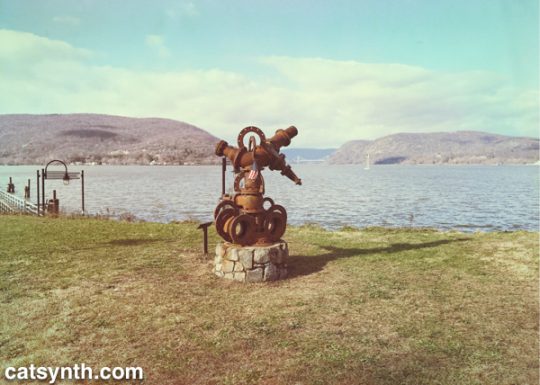
Sculpture at Fleishmann Pier in Peekskill, NY. We see the Hudson River and the Bear Mountain Bridge in the distance.
Last week’s Wordless Wednesday was also taken in Westchester County along the Hudson River.


Sculpture at Fleishmann Pier in Peekskill, NY. We see the Hudson River and the Bear Mountain Bridge in the distance.
Last week’s Wordless Wednesday was also taken in Westchester County along the Hudson River.
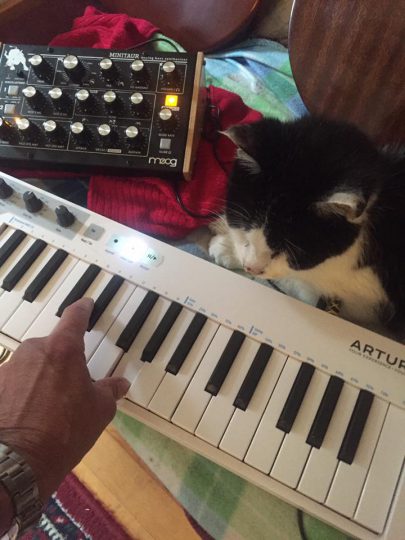
Mojo the cat looks on as a musical performance with an Arturia Keystep and Moog Minitaur unfolds. He seems to quite enjoy it. Submitted by Bruce Oliver via our Facebook page.
Mojo was my little buddy for 17 years. He loved synth sounds but would vacate the room if you picked up a guitar!
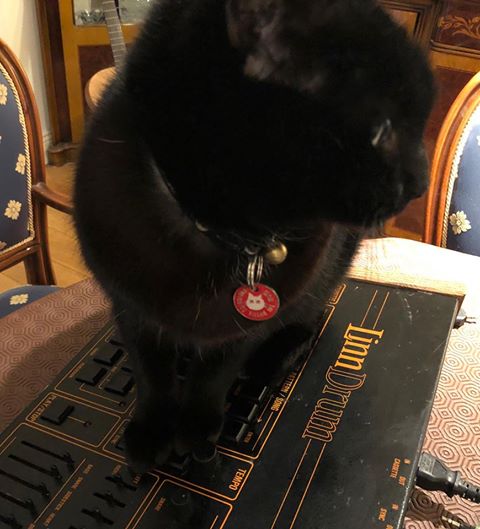
Dexter sits atop a vintage LinnDrum. Quite a prize of an instrument for feline and human alike! From Peter Fitzpatrick via our Facebook page.
Irish cat Dexter warms up the new Linndrum
Now resident in @Circuit3’s studio.
You can find out more about Circuit3 at their official website. Here is a sample of their music.
This weekend, we check in with Big Merp.
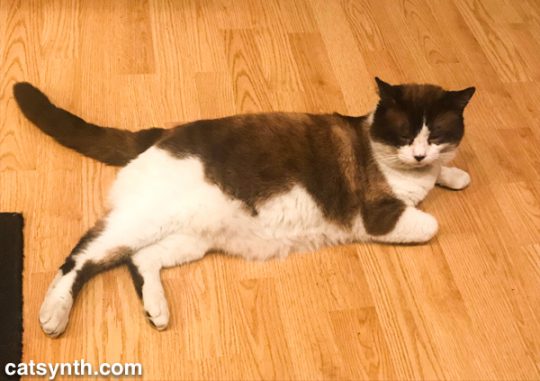
He’s definitely enjoying indoor-outdoor life as a pet cat. Most, though, just wants to chill out. And, he loves his food.
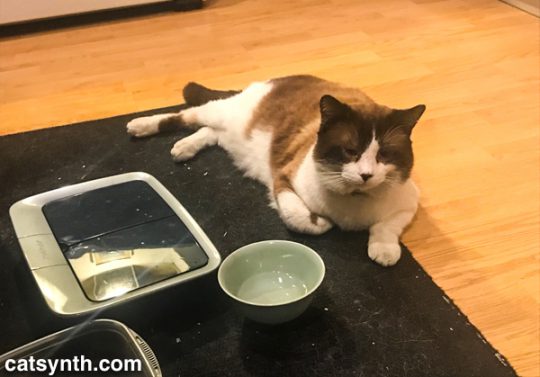
With the dreary weather of late, we certainly can’t blame him for spending time indoors, and we are glad that he has a place where he is safe and loved. But he does like to go outside when there is a break in the weather, patrol the neighborhood, and find his friend Hissy.
We hope you are all having a good weekend, and staying warm and dry.
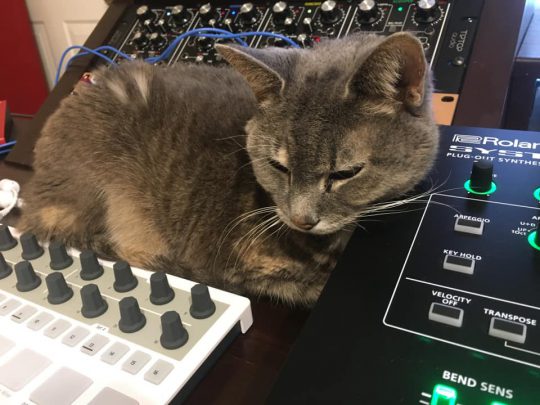
Kasey finds a comfy spot between a Roland Plug-Out system, Roland modules, and an Arturia Beatstep Pro. Submitted by Chris Bentley via our Facebook page.
Kasey the cat. Passed away at the age of 19 back in August 2017 but used to love to hang out on my desk while I was tinkering in the studio.
We are very sorry to hear of Kasey’s passing, and our hearts go out to Chris as the rest of Kasey’s family. A wonderful studio cat who lived a long and loved life 💕

Ripley is quite proud of his synths, an Ensoniq SQ 1 and Akai MPC. From Chris Ratterree via our Facebook page.
Here’s Ripley the
boombap cat. She follows me at http://www.instagram.com/chrisratterree
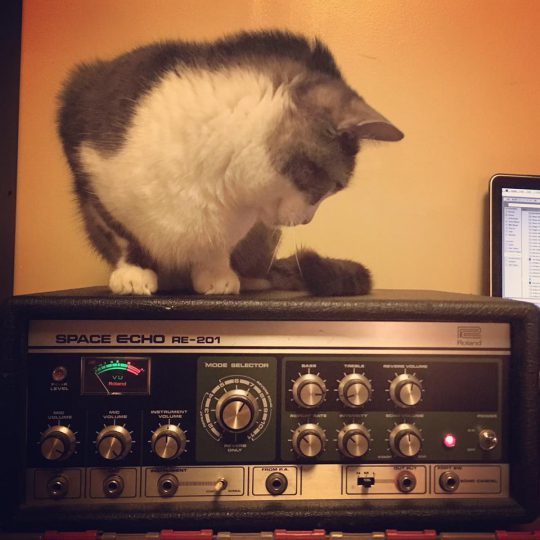
Biggie Smalls contemplates a vintage Roland Space Echo RE-201. From Brandon Fitzsimons via our Facebook page.
“What’s making that noise in there??”
The RE-201 continues to be prized by musicians for its sound. It is actually a true tape-echo machine (plus a spring reverb).
[Ikutaro] Kakehashi’s breakthrough development came in 1974 with the RE-101 and RE-201 Space Echo units, which used the standard 1/4″ tape of the open-reel variety, but made as one, continuous loop. It uses no reels of any kind; the tape is transported via a capstan drive. The tape loop is contained in a loose, constantly moving jumble in the tape chamber (also known as the tape tank) under a plastic panel which protects the tape and keeps it from getting tangled. The design resulted in lower levels of noise, wow, and flutter, and cut down on tape wear.[1] Replacement tapes were sold as well, named RT-1L.[2]
https://en.wikipedia.org/wiki/Roland_RE-201
There are several control dials on the device that alter such aspects as tape speed, repeat pattern (an 11-position rotary switch), one instrument and two microphone inputs, a single analog backlit VU meter for all three inputs, wet/dry mix for both echo and reverb, and intensity (number of repeats), that can be adjusted to a user’s liking; and bass/treble controls to EQ the sound of the repeats (not the dry signal), as well as dry and effected “Echo” output jacks with a switch for output setting (-10, -20, -35db levels.)
It is interesting to read this as I have been working extensively of late with the Magneto tape-echo simulator module from Strymon. You can see our review of the echo mode in this recent video.
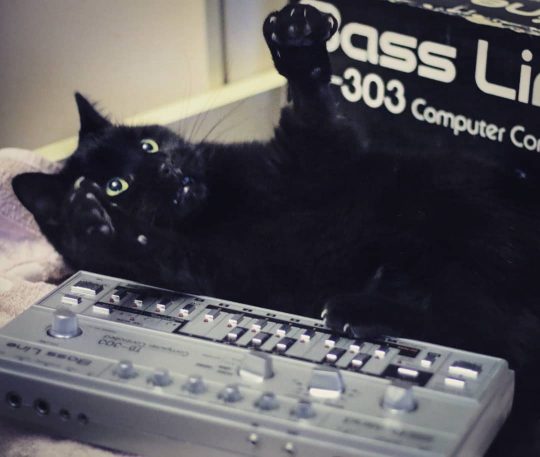
Yesterday was “303” day – the date is 03-03 whether you use American or every-other-country format. And our friend Marcel is posing with a genuine Roland TB-303 for the occasion.
From Eric at polynominal.com via Facebook.
The TB-303 has become a prized instrument, so much so that multiple hardware and software clones have been created to meet the demand. Roland even came out with a TB-03 for its Boutique line.
We at CatSynth have been fascinated with the Codex Seraphinianus long before this beautiful edition made its way to CatSynth HQ.
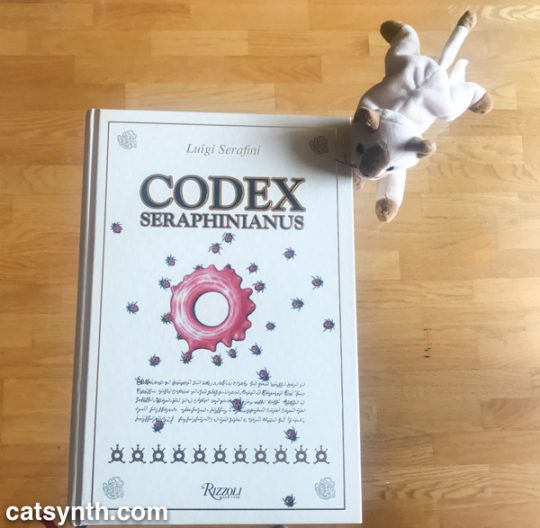
The Codex is a masterpiece of book art by Italian artist, architect
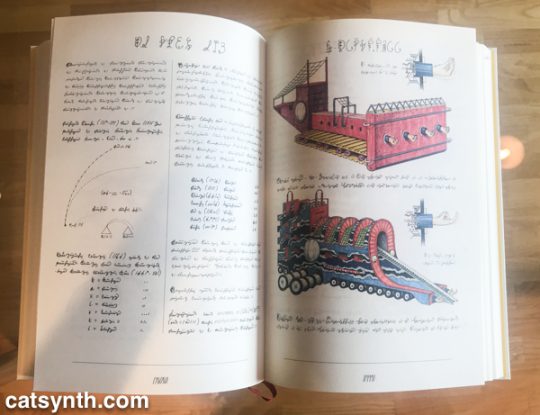
Most interesting of all, it is written in a completely invented script.
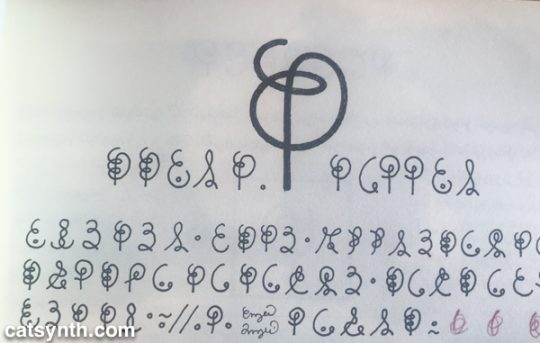
The script, consisting of squiggles and dots, sometimes detached and sometimes cursive, resemble a Western, Semitic or South Asian script, but one entirely of Serafini’s own imagination. It is easy to pick out repeated letters, such as the “E-like” character with one dot in its lower section; and curve-on-a-stem that appears to serve as a singular character in many portions of the first book.

Even without knowing the full meaning of the script or the illustrations, one can start to discern meaning. For example, on this page it is pretty clear that this creature tends to wilt (perhaps even suffer) in rain, but thrives in sunshine. (This is something I can sympathize with.)
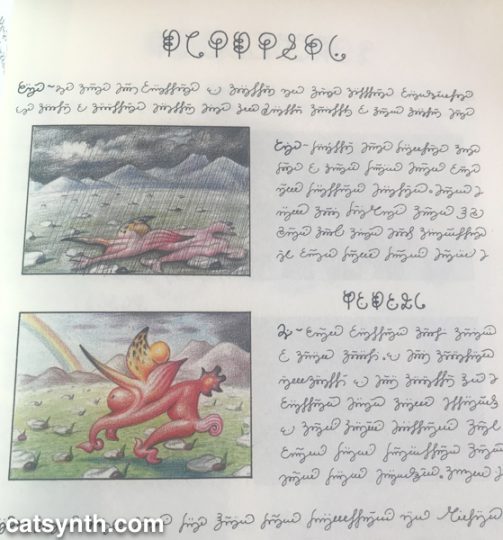
Serafini himself has declared the writing in the Codex to be asemic, without a specific structure or meaning. And while I take him at his word, one cannot help but construct meaning from both the images and the writing. I have long been fascinated by other alphabets and writing systems and been able to find patterns (and even learn them to some degree) independent of the languages they represent. For example, I was able to learn a bit of the Tamil script when traveling in South India in my youth, though I never learned the sounds or the language. Similarly, I began to pick up Sinographic characters in my time in China but with no knowledge of how to pronounce most of them.
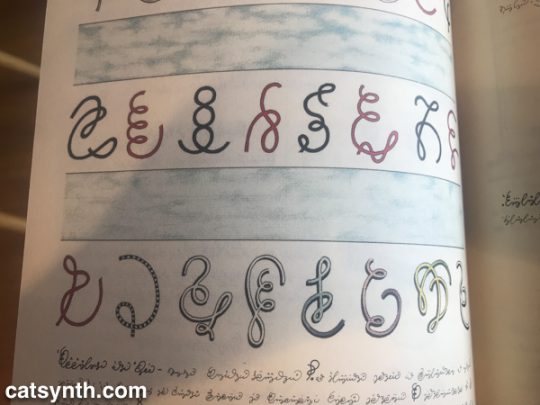
It is in this vein that I have begun to read the Codex from its start, treating it as a pure work of art with text and illustration as its medium. It’s actually a pleasurable and captivating experience to pour over the text and spot the patterns without being confined by the need for meaning. I made it through the first book (plants and anthropomorphic flora) and a bit into the second (animals). It is the fourth book (physics, chemistry) and the fifth (machines) that I most curious to “read” in depth, but I will take my time to get there.